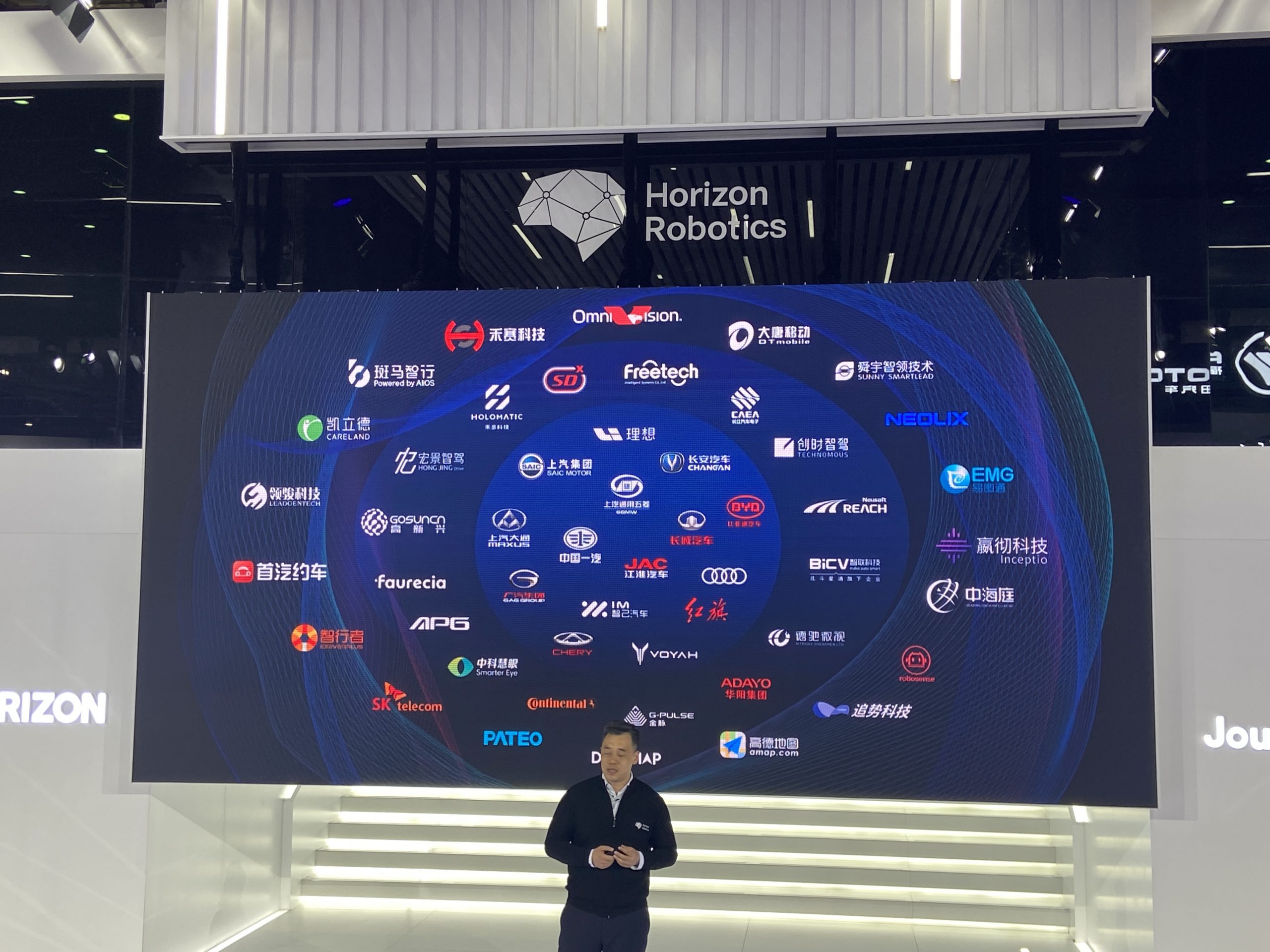Let’s talk about Horizon Robotics and their latest developments. Horizon Robotics is the only company in China that has achieved mass production of AI chips for installation in vehicles. It is also one of the few companies that provides both autonomous driving and intelligent cockpit solutions.
As of the end of last year, Horizon Robotics had shipped a total of 160,000 chips.
Their flagship products – Journey 2 and Journey 3 – are well known in the tech community. Journey 2 is currently their most popular chip and was used in the UNI-T vehicle produced by Changan Automobile last year.
Journey 2 has an equivalent computing power of more than 4 TOPS, with a power consumption of 2 W. In addition to its forward-looking solution, this chip’s performance in intelligent cockpits is even more impressive. Halo 2 intelligent cockpits, based on Journey 2 chips, include multiple-mode voice commands, emotion recognition, fatigue monitoring, and more. This year, they plan to upgrade with gesture control and facial payment, among other functions. Advanced facial unlocking, pupillary analysis, and voiceprint recognition are expected to be implemented in 2022.
The name “Halo” is intriguing, suggesting a glowing aura. Most car cabins are enclosed in a circular structure, so maybe Halo is intended to empower the cockpit to “shine”? Of course, this is just my personal speculation.
Journey 3 provides an equivalent computing power of 5 TOPS and can be used in ADAS and DMS driver monitoring scenarios.
Today, Horizon Robotics officially released their full-scenario intelligent vehicle solutions, which rely on their own chips to provide L2-L4-level assisted driving functions. The products are Mono assisted driving solutions, Pilot navigation driving solutions, and FSD fully autonomous driving solutions. Their computing power requirements range from 4-5 TOPS for Mono, 10-30 TOPS for Pilot, and 200-500 TOPS for FSD.
Mono assisted driving solutions are further divided into Standard and Advanced versions. The Standard version focuses on affordability for economic car models and supports a series of ADAS standard functions such as FCW, LDW, AEB, ACC, LKA, and TJA.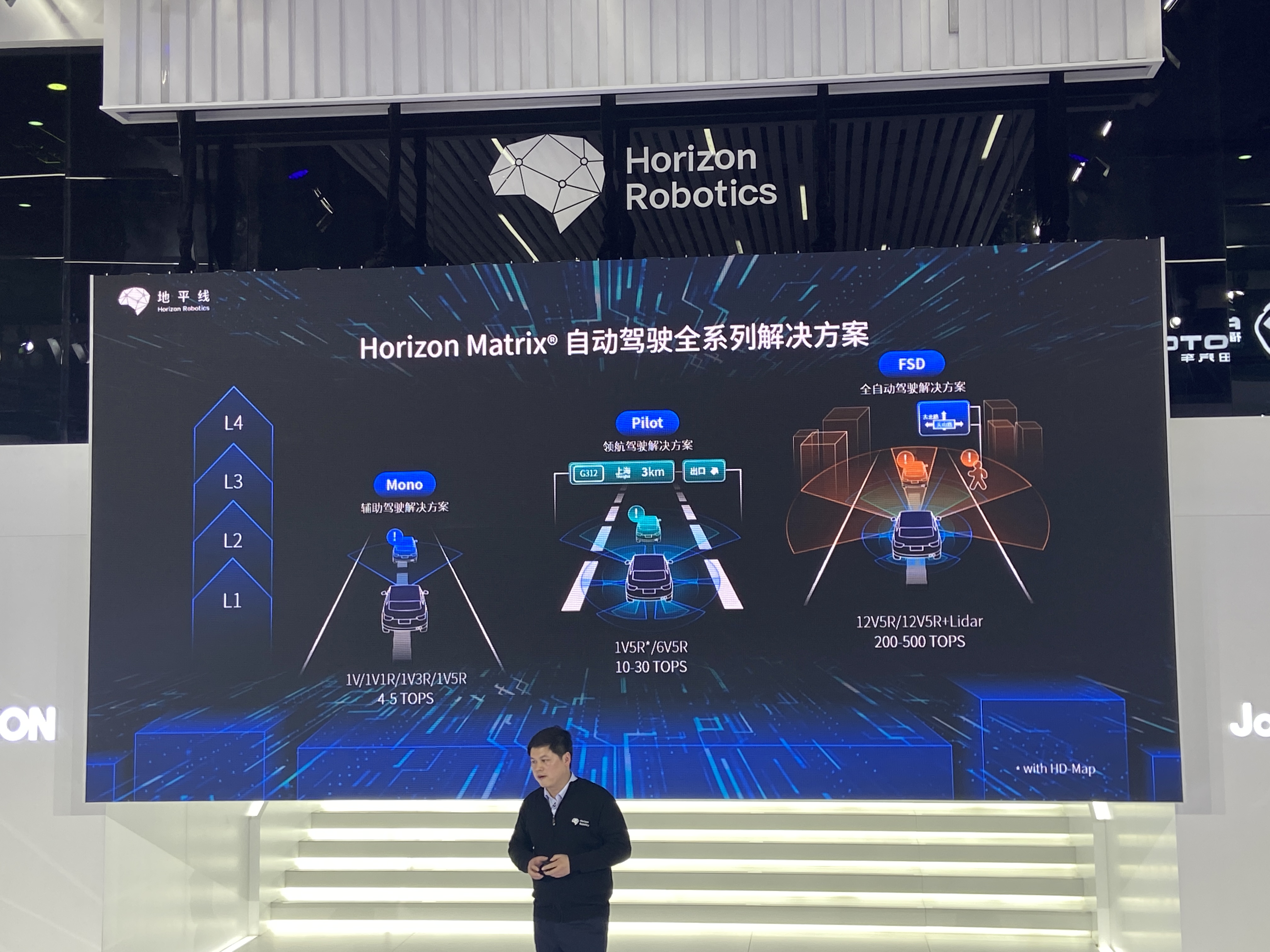
The Mono Advanced Driving System uses the “Journey 3” chip, which supports lane-level navigation, centimeter-level high-precision positioning mapping, and can identify long-tail objects such as road debris.
The Navigation Driving Solution is easier to understand, and its main features include automatic merging, merging and exiting ramps, and automatic overtaking of slow vehicles. Yes, similar to NoP, NGP, NoA.
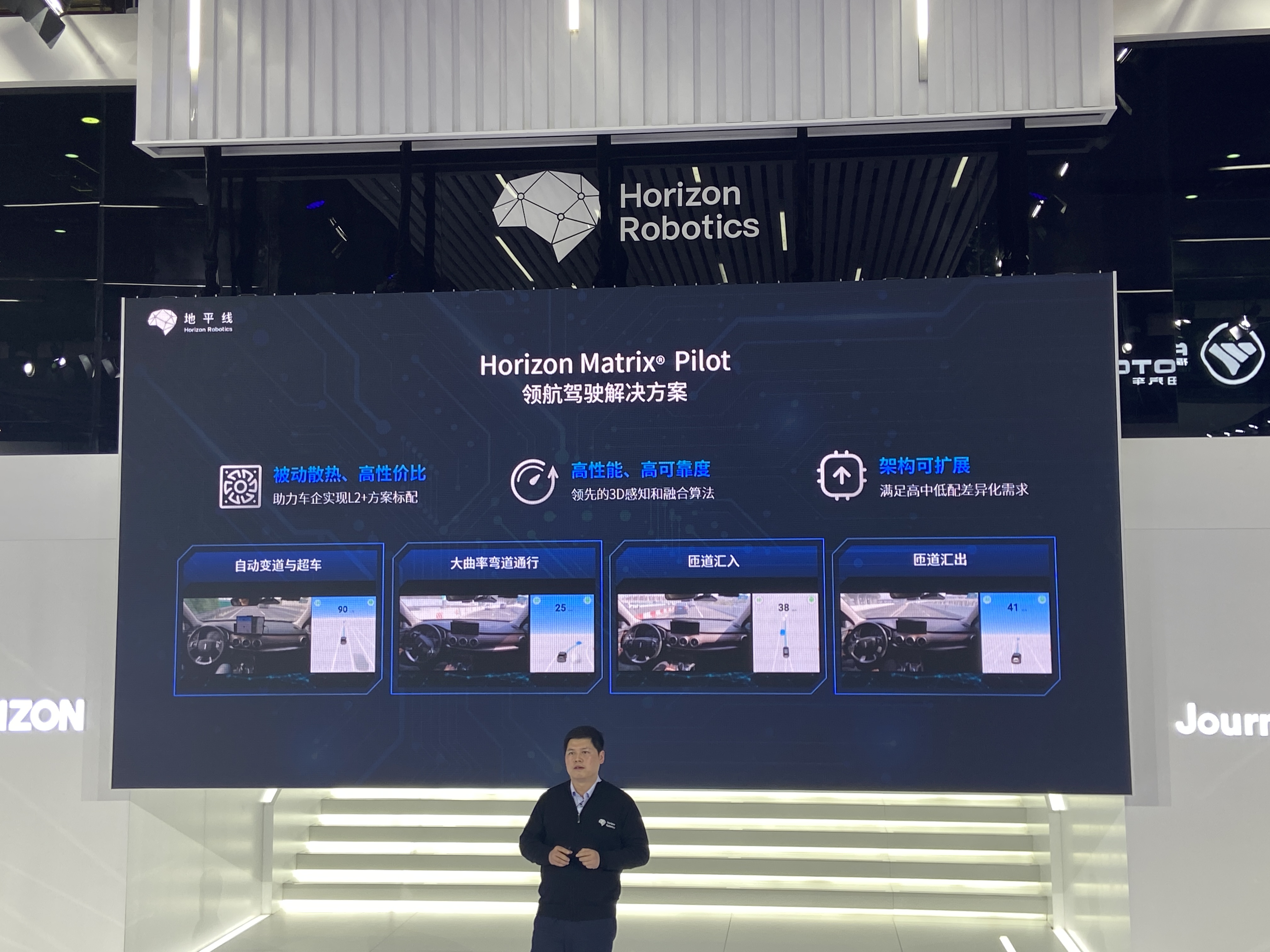
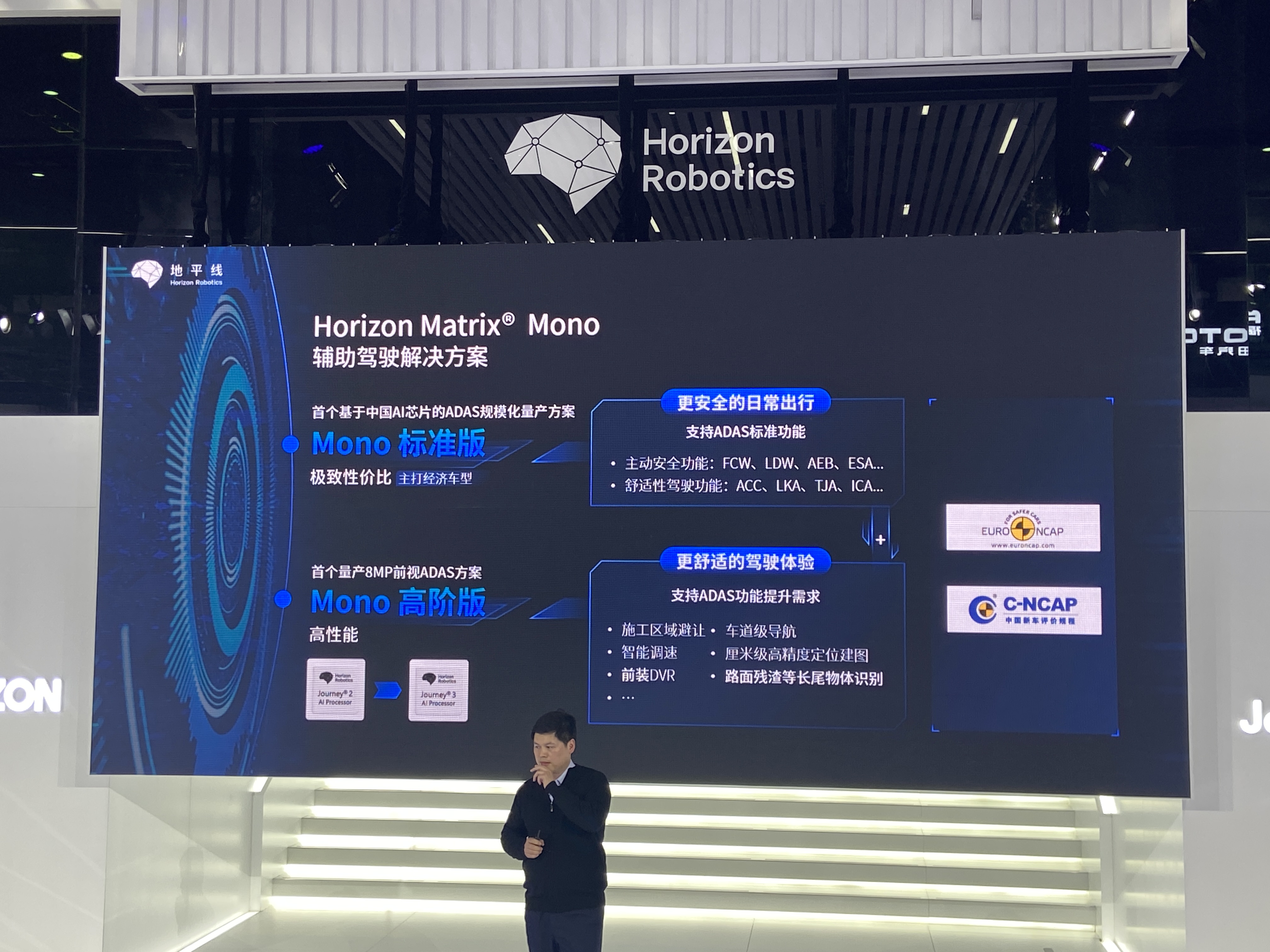
The FSD full-automatic driving solution will use the “Journey 5” chip, and the neural network will directly output the 360-degree environmental perception results of all elements, and realize real-time perception mapping without relying on high-precision maps! The FSD full-automatic driving solution can achieve point-to-point automatic driving, urban parking and automatic summoning.
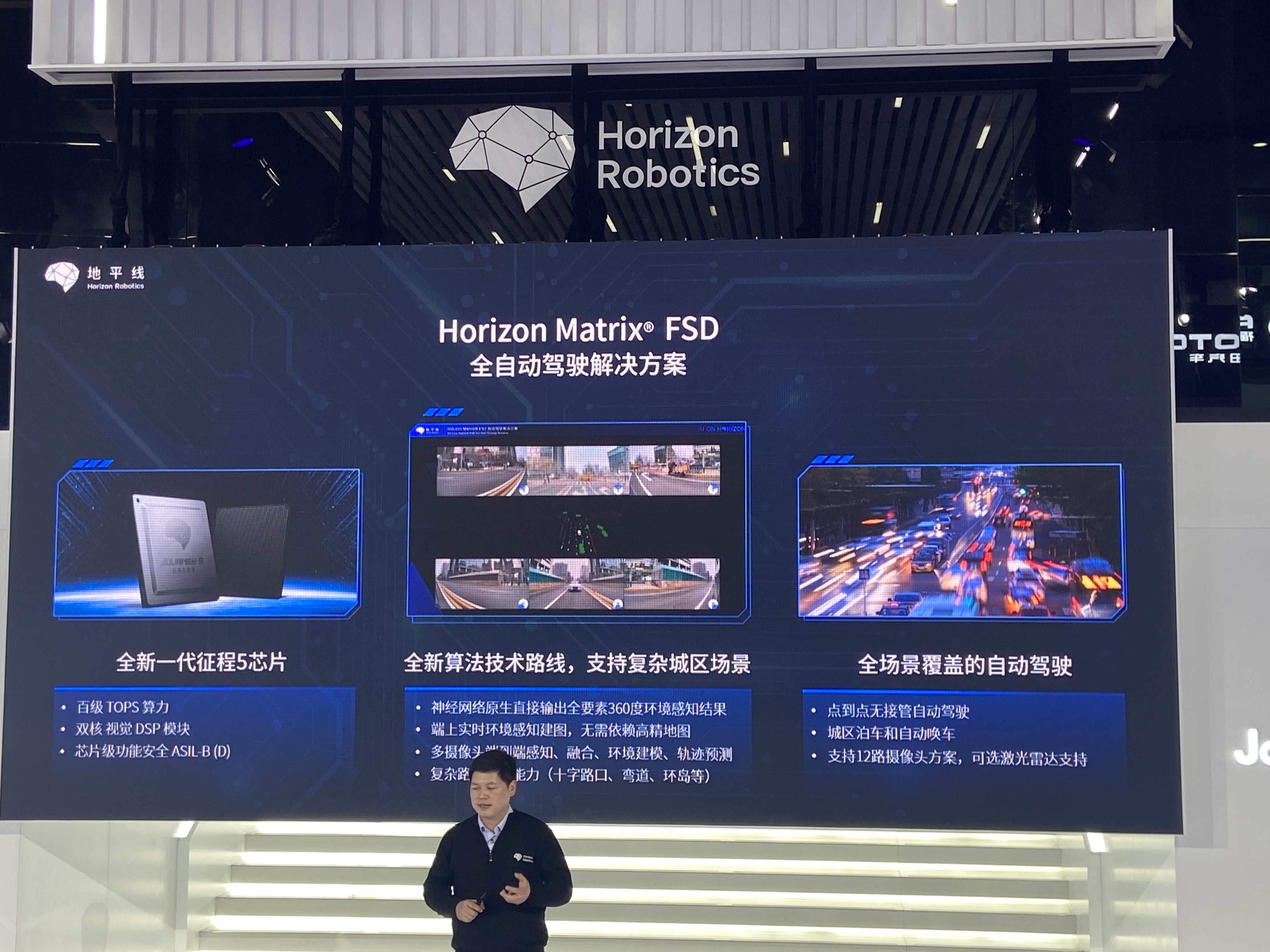
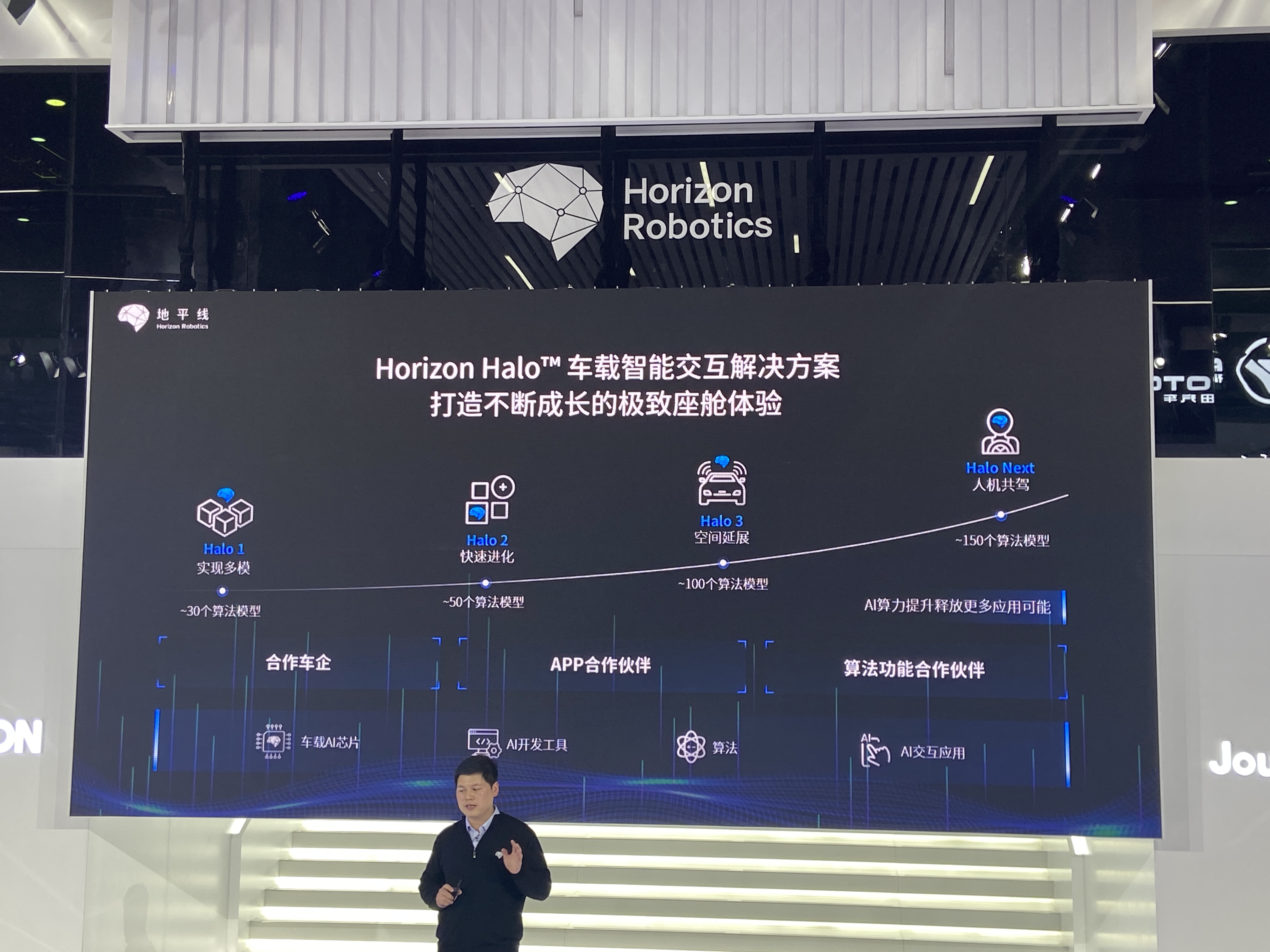
The “Journey 5” chip will be released this year and is expected to be installed in cars next year. There is no timetable yet for the higher computing power “Journey 6”.
Horizon’s advocacy has always been open cooperation, not only for Changan, but also for many domestic new car makers that have formulated cooperation plans with Horizon, including Ideal.
This article is a translation by ChatGPT of a Chinese report from 42HOW. If you have any questions about it, please email bd@42how.com.
